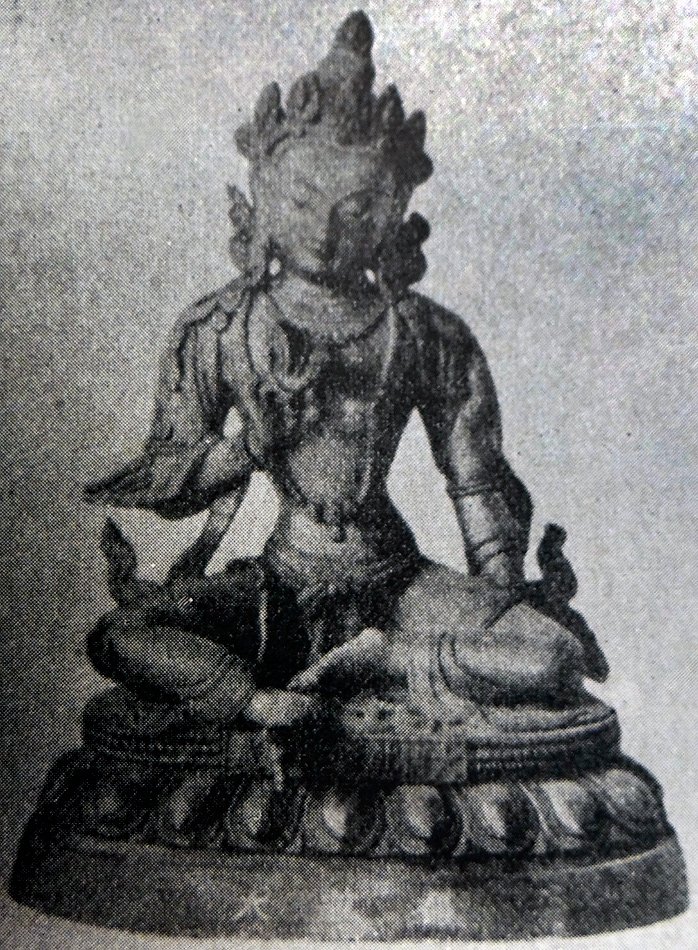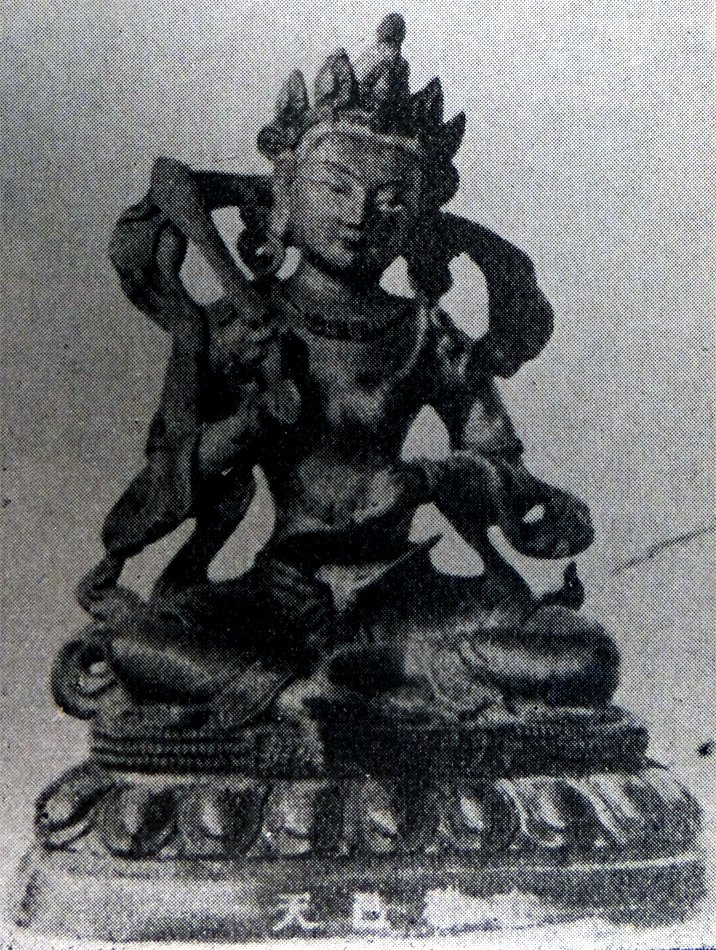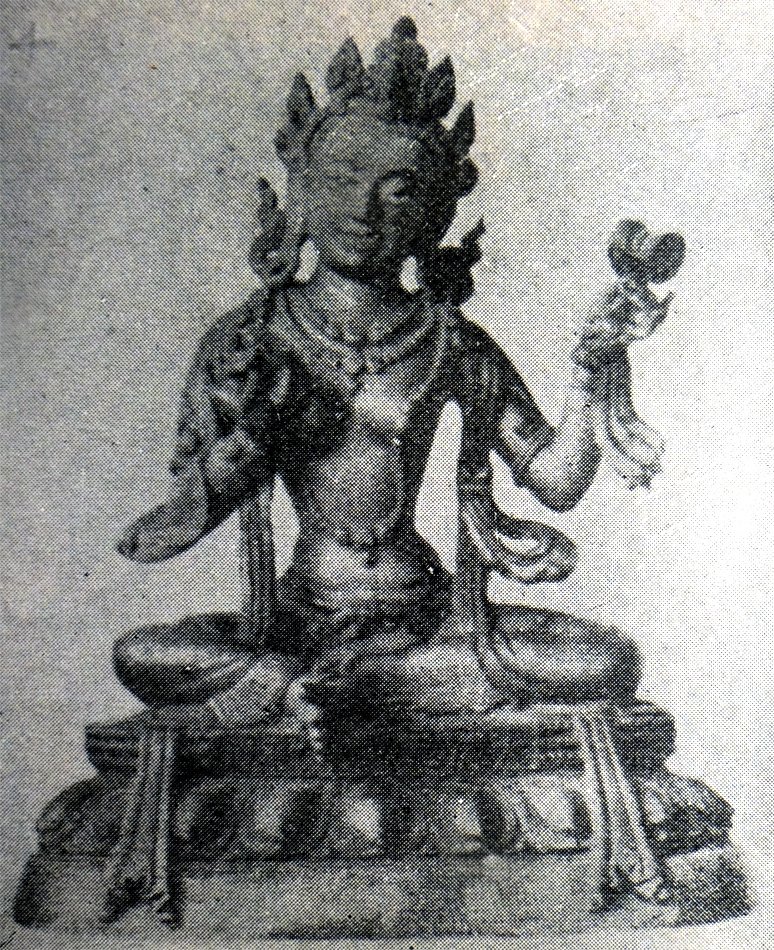The Indian Buddhist Iconography
by Benoytosh Bhattachacharyya | 1958 | 51,392 words | ISBN-10: 8173053138 | ISBN-13: 9788173053139
This page contains an iconography image of Zodiacal sings Deities: Tula, Kumbha and Mina and represents figure 246-248 of the book Indian Buddhist Iconography, based on extracts of the Sadhanamala English translation. These plates and illustrations represent either photographs of sculptures or line-drawing reproductions of paintings or other representations of Buddhist artwork.
Figure 246-248 - Zodiacal sings Deities: Tulā, Kumbha and Mīna
 Fig. 246: Tulā (Peiping) |
 Fig. 247: Kumbha (Peiping) |
 Fig. 248: Mīna (Peiping) |
There are the Twelve Signs of the Zodiac, named in the Hindu books on Astrology as Meṣa, Vṛṣabha, Mithuna, Karka, Siṃha, Kanyā, Tulā, Vṛścika, Dhanu, Makara, Kumbha and Mīna. It has not been possible to trace any Sanskrit text from Buddhist Tantric literature which mentions the Dhyāna or even a tolerable description of these Signs of the Zodiac, But the Rāśis are long believed in India to be the store-houses of mystic power, and it is but natural to expect that these Twelve Signs should be deified with colour, form, weapons and the rest. It is also natural that these deities should be assigned to one or another of the families of the Dhyāni Buddhas so that they may be fitted into the Buddhist pantheon. When more literature on the subject is published, only then it will be possible to find descriptive texts. It is however desirable at this stage to refer to the excellent statuettes of the different Signs of the Zodiac that have been discovered in China and illustrated by Professor Clarke in his Two Lamaistic Pantheons, Vol. II.
Figs. 246, 247 and 248 illustrate the three Signs, Tulā, Kumbha and Mīna.
